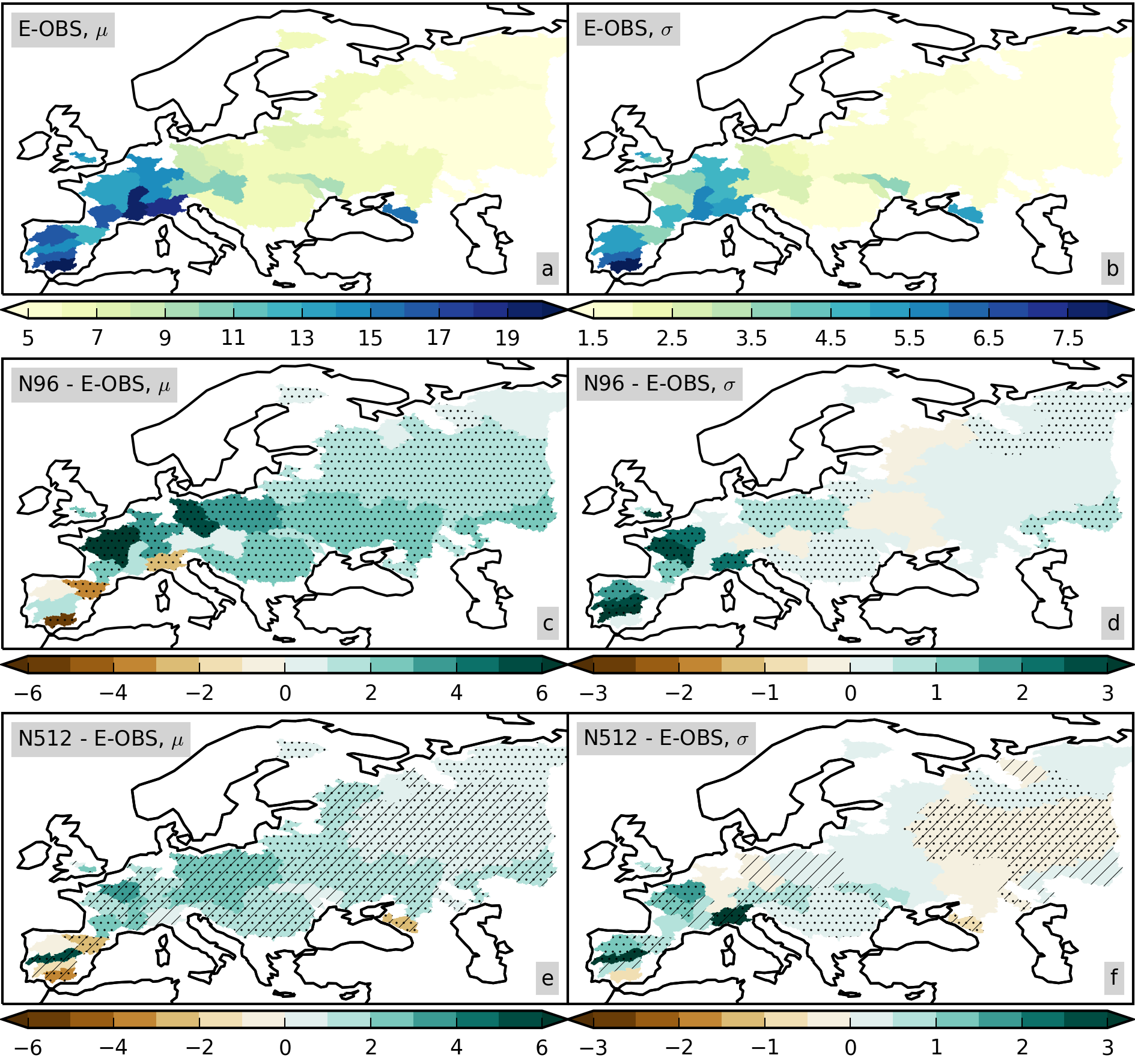Plot of the month for January 2017 is from Reinhard Schiemann, who evaluates extreme precipitation over large European river basins.
Typically, we are interested in the mean and variance of climatic variables, such as precipitation. However, it is the extreme events which may significantly impact societies. Generalised Extreme Value Analysis can be applied to evaluate extreme, high-impact events. Two of the parameters that describe extreme value distributions are location (µ), or the magnitude of the 'typical' extreme, and scale (σ), or the year-to-year variability in extremes. (More information can be found in this blog.) These are plotted in the figure below, which shows an evaluation of winter (December-February) precipitation in UPSCALE simulations.
We see that both the low- (N96) and high-resolution (N512) models tend to produce too-high winter precipitation extremes over large parts of Europe, especially over the northern European plains from the Loire river basin in the west to the Vistula basin in the east (greenish colours for the model-observation differences for the location and scale parameters). This problem is alleviated in the high-resolution model, where these differences are smaller than in the N96 model.
Figure | Winter European extreme precipitation. Location (µ) and scale (σ) parameters (mm/day) over Europe in observations (E-OBS; top row) and in the low- (N96; middle row) versus high- (N512; bottom row) resolution HadGEM3 model. Stippled areas in the middle and bottom rows show significant differences from E-OBS and hatched areas (bottom row) show significant differences from N96. (Click the image for a larger version.)
This statistical assessment is only the first step in evaluating models' ability to represent precipitation extremes, and important questions remain. How do our two models represent rain-producing Atlantic storms, and how do these storms interact with the European landmass and, in particular, major mountain chains, such as the Alps? To answer such questions, process-based model evaluation, an important part of the HRCM group's research, will be undertaken.
This is ongoing research.
